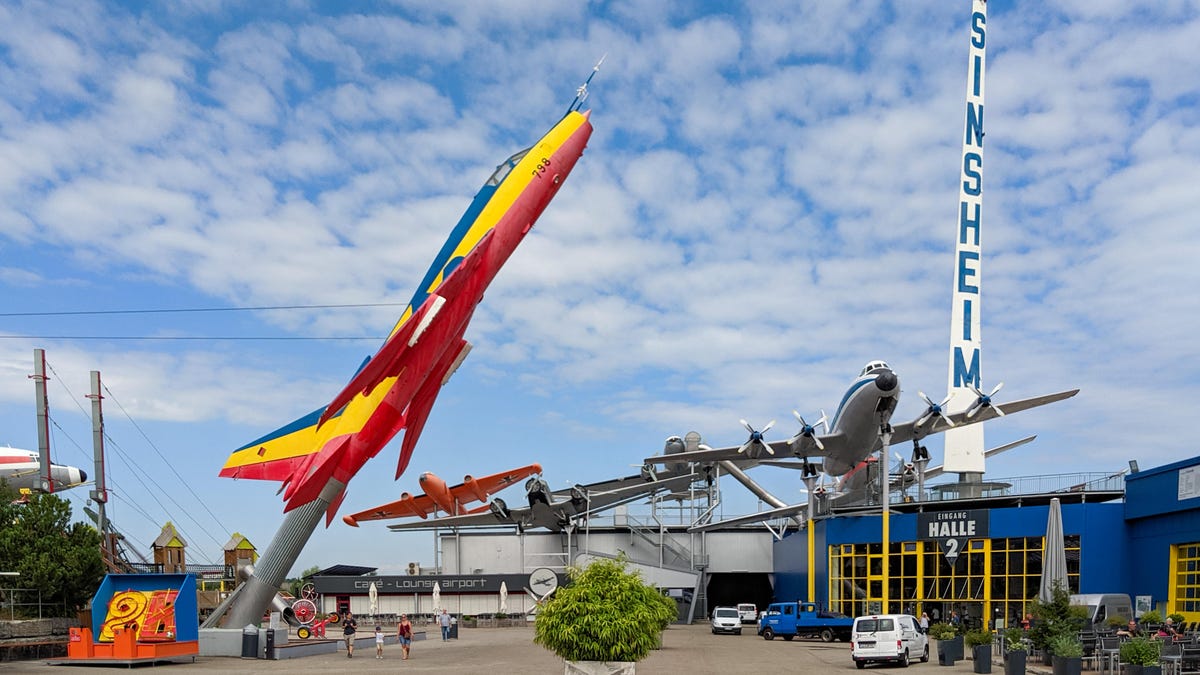 Why You Can Trust CNET
Why You Can Trust CNET Civilian supersonic: Exploring Concorde and Russia's Tu-144 at the Technik Museum Sinsheim
There were only two supersonic airliners, the Concorde and Russia's Tu-144. Only one place in the world lets you see them side by side. Here's a look around the huge Technik Museum Sinsheim.

The speed of sound -- 767 miles per hour -- is the kind of rarified velocity reserved for the adventurous few. Military pilots and astronauts come to mind, streaking across the sky in their high-tech tubes of titanium and steel. For a time, though, such speed was available to civilians in the form of the Concorde. The only supersonic commercial airliner, it covered the distance between Europe and North America in less than half the time of traditional jets.
Not to be outdone by their aviation rivals in the west, the Soviet Union built and briefly flew its own supersonic commercial jet, the Tupolev Tu-144. Sixteen were built and a handful remain. Only one is outside Russia, and it's the star of the show at Germany's Technik Museum Sinsheim.
Mounted above the museum itself, the Tu-144 appears to soar, held back by sturdy metal columns. Behind, as if chasing, there's a French Concorde. While these are worthy attractions in themselves, the museum has a massive collection of other historical aircraft, automobiles, and even tanks. Here's a look around.
The Russian Concorde
The Tu-144 first flew in 1968, two months before the Concorde. Top speed was an impressive Mach 2.15, slightly faster than the Concorde, and it could carry over 40 more passengers. And it was, by all accounts, a terrible aircraft.
The cabin was so loud passengers had to pass notes. It was notoriously unreliable. Landings were high-speed and hard, and required a drag parachute. Multiple crashes meant few passengers ever flew on the Tu-144. In 1983 the project was cancelled, though some aircraft were used for a few more years as flying laboratories and to set some speed records.
Seeing the Tu-144 today is nearly as impressive as seeing the Soviet Buran space shuttle at Sinsheim's nearby sister museum. The iconic mustache canards are the first visual clue that this isn't the Concorde. Underneath, the massive Kolesov engines dominate the airframe, making the Concorde's Olympus engines seem svelte by comparison. Inside the earth-tone bins and subdued colors are nothing a western designer would have allowed. The cabin is surprisingly roomy, however, relative to Concorde anyway. Teal instrument panels make the cockpit the most colorful part of the aircraft.
Tanks, Tupolevs, Heinkels and helos
Sinsheim is the largest privately owned museum in Europe, and one of the largest in the world. There are hundreds of cars, tanks and even trains, not to mention dozens more aircraft.
Two of the other standouts are very rare Heinkel He 111 and Junkers Ju 88 bombers. They were both widely produced during WWII, but only a few remain today. Both inside the museum, and in one of the many outdoor areas, there are German, American and even Russian tanks.
There are also Lamborghinis of the wheeled and tracked varieties, a Vector W8 and more Mercedes, Porches, Ferraris and Bugattis than you can shake a tie rod at.
Sinsheim und Speyer
Technik Museum Sinsheim and Technik Museum Speyer are owned by the same company, and while similar, they offer slightly different experiences. Though both have a large number of cars and planes, Sinsheim has more cars, while Speyer has more aircraft. That said, the Tu-144 is quite a draw, to some people perhaps more so than the Buran. The museums are about 30 minutes apart by car, though you probably couldn't do both in the same day. There's just too much to see.
Conveniently, there's a gallery above with many of the coolest exhibits, and you can also check out our tour and gallery of Speyer.
As well as covering audio and display tech, Geoff does photo tours of cool museums and locations around the world, including nuclear submarines, aircraft carriers, medieval castles, epic 10,000-mile road trips and more.
Also check out Budget Travel for Dummies, his travel book, and his bestselling sci-fi novel about city-size submarines. You can follow him on Instagram and YouTube.

